What is gamification? Guide (2022)
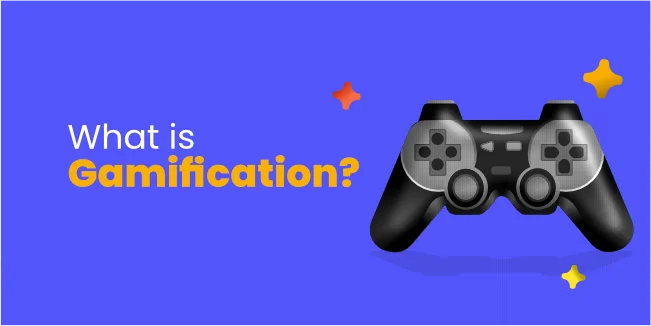
Most of us are more or less familiar with video games in general. A trend that is becoming more and more noticeable is the implementation of game elements into digital products that have little to do with a game. This trend is called gamification.
Gamification is most often used to boost user engagement, user experience and convert mundane tasks into enjoyable action.
In this article, we'll look at what exactly is gamification, what the history of this solution was, and many more! So, let's dive into it.
A brief history of gamification
People like to play games because they allow us to feed the basic traits that we have in our genes. I mean competing with other people, constantly improving yourself, or being rewarded. All these thanks to several thousand and now millions of moving pixels.
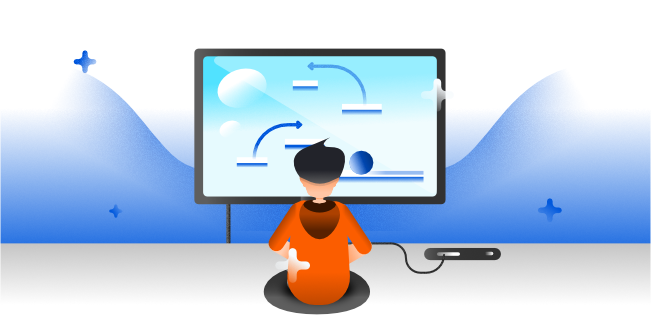
Since computer games began to develop strongly in the 80s and 90s, it is obvious that at the beginning of the 21st century, the potential of their mechanics began to be noticed. The person who coined the term gamification is Nick Pelling, who was a game developer in the 20th century and focused on software development in the 21st century.
When he combined these two fields to create a game-like user interface in 2002, he created the first solution that used gamification. Over the next 6 years, more solutions using gamification were developed. The year 2008 is considered the moment when the term gamification saw the light of day, thanks to Bret Terrill, who used this phrase at the Social Gaming Summit.
Since then, more and more companies have decided to implement gamification in their digital solutions. The real "boom" for this type of solution began in 2010 and continues until now. So let's look at what gamification is all about.
So, what is this whole "Gamification"?
The definition of gamification from the Merriam-Webster dictionary perfectly describes the general assumptions of this solution: "the process of adding games or game-like elements to something (such as a task) so as to encourage participation. "
Game principles used in non-game contexts are what gamification is all about. Therefore, gamification can be used not only in digital products but also in real life. It can be done, for example, through loyalty programs, which, thanks to the awards offered, encourage the user to keep "playing".
Gamification in software products aims to keep the user within the application as long as possible, increase engagement, and help him achieve his goals. To achieve all that, gamification uses natural human tendencies, which we mentioned earlier, such as competency, cooperation, and happiness when we are rewarded. However, we will focus on implementing gamification in the field we at mDevelopers know best - software. Now let's see what some of the most popular gamification techniques are.
Gamification techniques
Rewards
Everyone likes to be rewarded, so many applications use the gamification strategy based on the reward system. We used this type of system in an application built for the e-learning company UJJI. In this case, users of the earn badges application for logging in daily, which they can immediately share on their social media.
Thanks to the rewards, the application not only engages users but also gains another source of organic advertising. Another example of game mechanics within the UJJI app are the trophies, which user can get for completing a given task or achieving their goal.
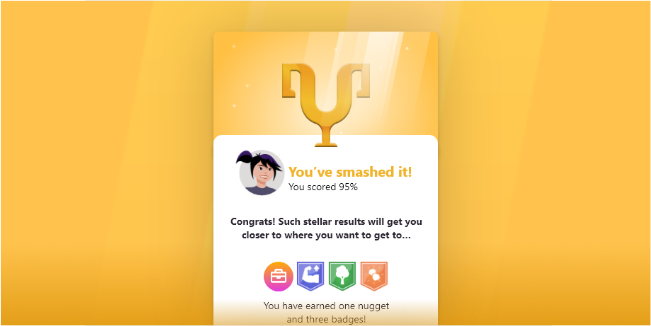
Another way to use a rewards tactic is to implement the point system in the application, thanks to which the user gets points for each completed task or achieved goal, which means that he can achieve higher and higher levels. Additionally, the user can receive digital rewards such as in-app currency or the trophies mentioned above when reaching the next level.
Personalization
Games do one more thing - they allow for personalization. Nowadays, people love when something can be tailored perfectly to their needs. That is why, for example, bitmoji introduced by Snapchat and later Facebook, made a great sensation.
A classic example of such successful gamification implementation are avatars, which are the electronic equivalent of the user. Thanks to the avatars, the user can feel part of the whole application and become more familiar. We've developed such a solution for the UJJI team.
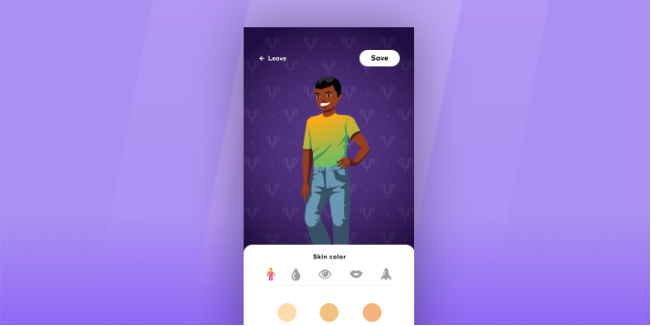
Greater attachment to the application results in higher retention and more loyal users. In a more general view. personalization can include elements such as layout, push notifications, background color, etc. Give the users space to personalize the elements of your application, and it will pay off in the form of customer retention.
Full-on gamification
As discussed before, "gamifying" means adding gamification elements to the application that is not a full-fledged game. However, you can also decide to go all the way and add mini-games to your app.
Such a decision was made by our client UJJI, whose application is a platform to fight procrastination. As part of this fight, the user has several mini-games at his disposal that allow him to achieve goals and learn through play.
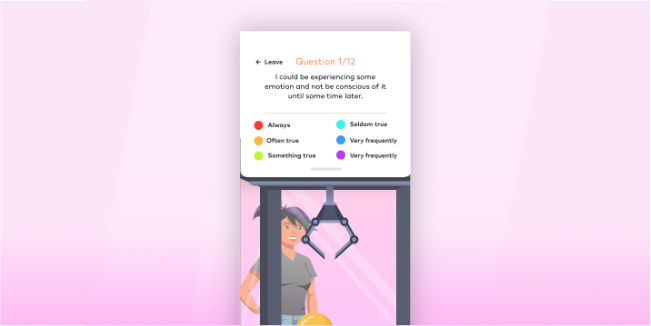
Such game-based learning made 93% of the test group users assess the application as effectively supporting achieving goals. However, you should remember to properly adjust such mini-games to your platform. After all, this type of solution will not fit everywhere.
Challenges
Challenges are what drives each of us. Regardless of whether they are challenges at work, like acquiring new clients, or in everyday life, like talking to this pretty girl on the train. Challenges work because they make us grow and help us become the best versions of ourselves.
Games make great use of this mechanic to keep players constantly entertained. In the case of gamification, challenges can be used to transform non-game activities such as boring tasks into some kind of fun and inspire users for further struggles. It's best if these challenges aren't too complicated so that any user can attempt to complete them.
If the user gets used to such a system drawn out of game design, he will return to the application more often to fulfill new challenges.

Leaderboards
Competing with other people and the desire to be higher and higher in the rankings drive us not only in everyday or business life but also in games. Therefore, one of the most basic forms of gamification is the implementation of leaderboards, thanks to which users can see how their progress compares to that of their friends or other users. In this way, you can significantly increase engagement and motivate people to stay with our app and achieve their goals.
However, being competitive is not always a good solution. If you want your application to be positively perceived by all users, the best solution is to make the rankings optional so that no one is offended.
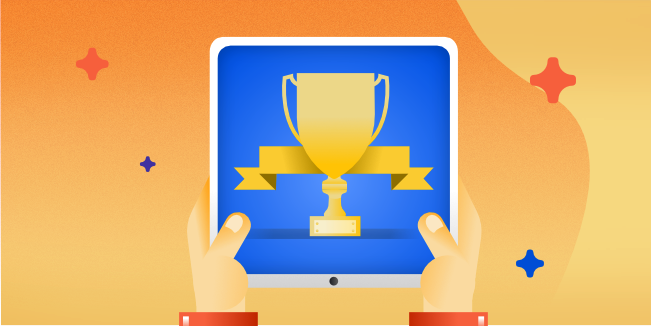
Examples of gamification
Nike+ Run Club
Nike uses several elements classified as gamification in its application for runners. First, it measures users' efforts, which can be later shared on social media. It rewards the user with badges and trophies for taking part in challenges. Running thanks to this application becomes much more enjoyable. Add to this the fact that having the right watch with the application, via IoT, all data is synchronized with the phone, and we have a recipe for success!
Snapchat
Snapchat is an application that has been on the market for many years. Still it uses gamification very well to its advantage. First of all, there is the competition element because users earn virtual points by sending photos. We can always see how many points our friend has and try to surpass him.
As we mentioned before, Snapchat also uses avatars that the user can make himself look like and thus become more familiar with the application. Additionally, Snap has achievements that the user gets, e.g., sending photos every day for 30 days.
Kahoot
It is an e-learning app that allows you to learn English through engaging quizzes. Children and youth can compete in real-time and try to achieve the best results by correctly answering the quiz questions. At the end of the game, the scores and the podium with the names of the top three players are displayed.
By adding two gamification elements - competitiveness and points, children and teenagers are eager to use this application during lessons.
How to correctly implement gamification?
We already know what popular forms of gamification are and which popular apps are using such solutions. Now we need to discuss how to implement game design elements so that they become an advantage, not a disadvantage of the application.
Keep it simple
The most important thing to remember is that all these game-like elements should only support your idea and application. You can't get over it. Many applications on the market have a great core offering, but the gamification elements that surround them complicate the use of the application too much. Effective gamification is related to the fact that all elements fit perfectly into the application's structure and do not disturb the navigation. The user experience is at the highest level.
Besides, for gamification to work, you first need to create an application plan and a structure to which you add gamification design. After all, not every application will suit leaderboards or prizes.
Set goals
Think about what you want to achieve by implementing gamification and setting goals. Is this solution supposed to increase the retention rate, or can it extend the session time? First, ask and answer this question, and only then think about implementing gamification in your project.
All the successful gamified apps had a well-crafted plan and a verified rationale for implementation. Once again, we can support this thesis with our UJJI project. Before creating their gamified application, we met at the Discovery Workshop, where we planned the entire development, proposed appropriate solutions, and set goals. Thanks to the great foundations, their application enjoys great recognition among users.
Give users value
The most important thing your gamification platform needs is to give users value. All game elements you will implement must be thought out and adjusted to your target group. The pointless implementation of game elements just because they are fashionable will not work.
For example, if you have an e-learning platform like Duolingo, you need to ensure that gamification elements engage learners to continue to learn. The mini-games won't work in this case, but challenges and rewards can be a good option for a user to become loyal. Let users feel that they actually achieved something and your application allowed them to learn something interesting.
Let users share
If you implement rewards or achievements in your application, give users a chance to show off on social media. Thanks to this, the user can show friends that he has achieved his goals, and we gain another source of advertising. It is one of the biggest advantages of gamification, organic user acquisition, and it can have a snowball effect, thanks to which our application will become recognizable.
Why is it worth implementing gamification?
Gamification is a solution that has been used for years in corporate training to boost employee engagement and in customer loyalty programs, to keep the customer, well... loyal. In the case of digital products, such as mobile applications or web gamification, it allows you to achieve a much higher user engagement and retention rate.
All because the user wants to return to the application to win new awards, face new challenges, or occupy higher and higher positions in the ranking. Additionally, if properly implemented, all these game-like elements increase the user's session time significantly, and the app gets another source of organic advertising (shared awards).
Throughout this article, the UJJI gamified application that we created was moving through. Let it serve us again to show how much gamification pays off. Statistically, e-learning apps have a retention rate of about 4%. In contrast, the UJJI app, which uses gamification, has a 15% retention rate.
It is known that many elements influence the retention rate. Still, the test group made it clear that they could achieve their goals faster and better thanks to gamified elements. The achievements and rewards encourage them to continue using the application.
Summing up
Gamification is a solution that, if implemented in the right way, will certainly pay off. However, you must remember to match your gamified elements to the application structure and define your desired outcome. If you would like to discuss implementing gamification in your project, feel free to use our free consultation service.